
Key Points
- Short-Term Volatility Is a Concern, Long-Term Trends Are Holding
- Relative Weakness in the NASDAQ Composite Must Be Watched
- 10-Year Treasury Does Not Break Down Despite the Fed
- Commodities Hold the Rising 40-Week Moving Average
- Dollar Remains a Bullish, Haven, Asset
U.S. Equities
The S&P 500 came under pressure last week but managed to hold the 10-week moving average despite closing near the low of the weekly range. The rising 40-week moving average and price-based support near 4,300 are the key levels to watch should last week’s weakness build into something bigger. The 14-week RSI is holding in a bullish regime for now but did not confirm the record closing high from the previous week. While the longer-term trend remains bullish, the short-term has become less clear and more volatile. The inset chart gives us a picture of the volatile trading that has been in place since early November on a daily timeframe.

Small Caps were also under pressure last week, with the S&P 600 closing below the 10 and 40-week moving averages for the second time in the past three weeks. Last week, we wrote that we were hard-pressed to make a bull case on small caps, and that view remains this week. The 14-week RSI is moving lower after failing to confirm the November breakout. At the same time, the group continues to weaken on a relative basis. Until the breakout level near 1,400 is recaptured, the best that we can say about the trend is that it is neutral, albeit with a downside bias.
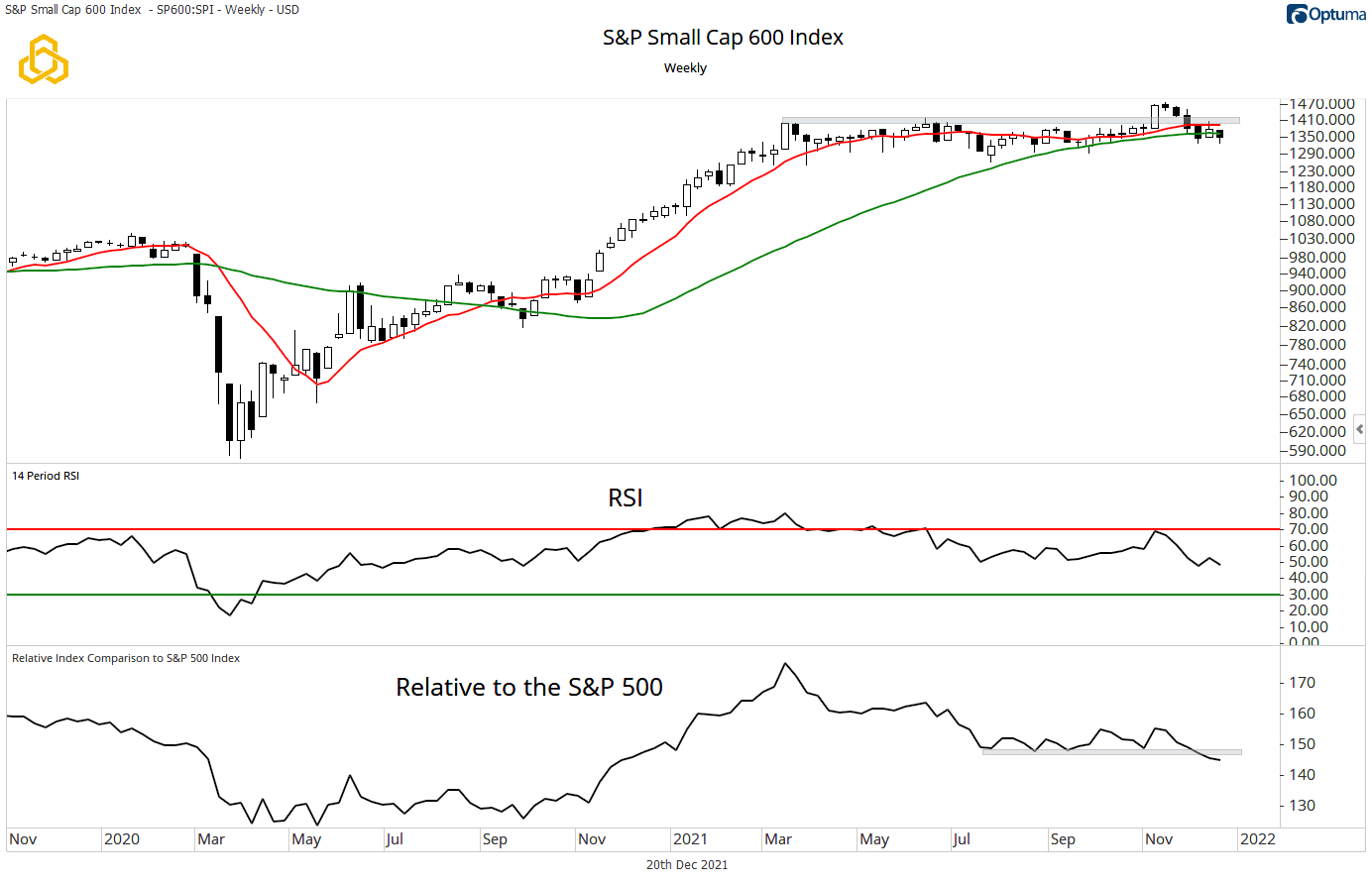
Looking under the surface of the Small Cap Universe, there was a very “defensive” tone to the week, based on the three sectors that closed higher:
- Utilities – Breaks to a new high.
- Health Care – Rebound underway, but still a lot of work to do.
- Staples – Strong week, but still in a consolidation.
- Energy – The worst of the week, off nearly 10%.
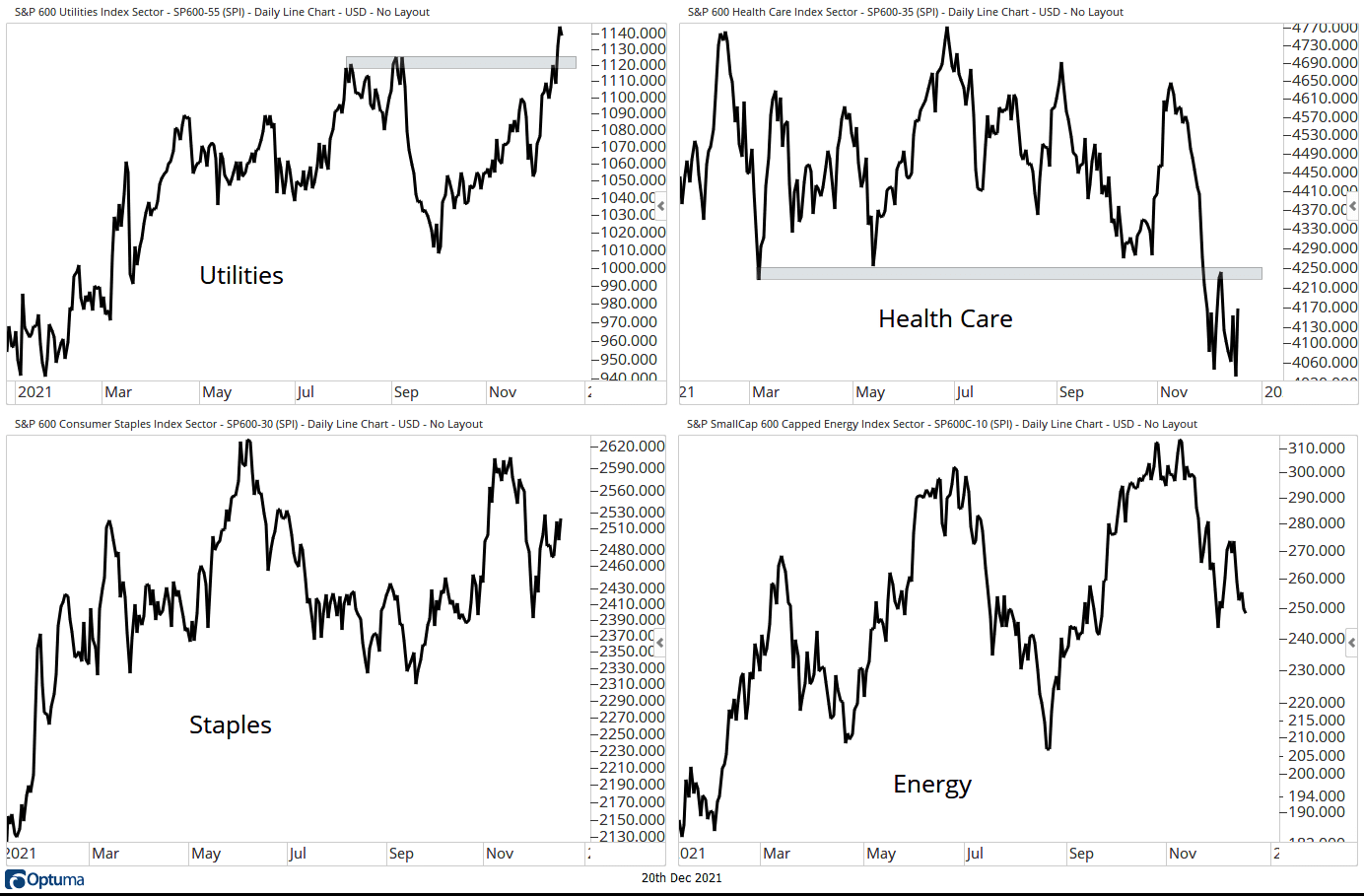
The NASDAQ Composite Index closed below the 10-week moving average for the second time in the past three weeks, as this group was not immune to the selling pressure that took hold. The rising 40-week moving average is now a key level to watch. In addition, bulls want to see price-based support at 14,300 continue to hold. The 14-week RSI remains in a bullish regime, but we are concerned with the relative performance, which has been under pressure of late. Yes, the long-term trend remains bullish, but, as with the S&P 500, the daily chart (inset) paints a clear picture of the daily volatility.
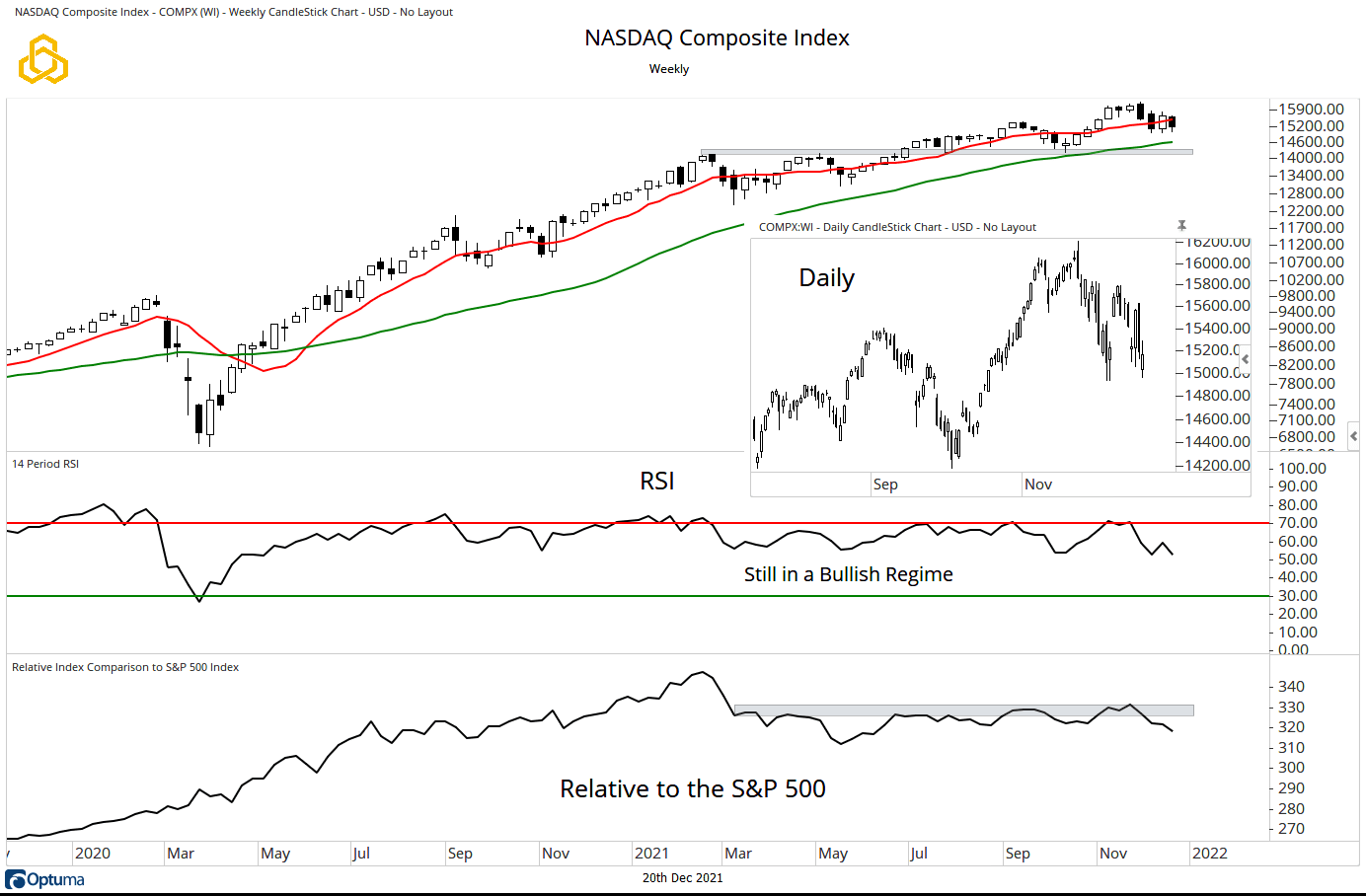
U.S. Fixed Income
With equities under pressure last week, it is not surprising to see that there was a bid to the 10-Year Treasury Note. What is somewhat confusing is that the consensus view is that the Note will come under pressure as the Fed begins to taper the buying of assets and that there will be three rate hikes next year. This narrative “should be” bearish for Treasuries, sending yields higher. However, Treasuries are not collapsing. Price has moved above the 10-week moving average, and we are now watching the 40-week moving average closely. There was also another higher low for the 14-week RSI.
Additionally, there is a strong resistance for rates at the 1.75% level.
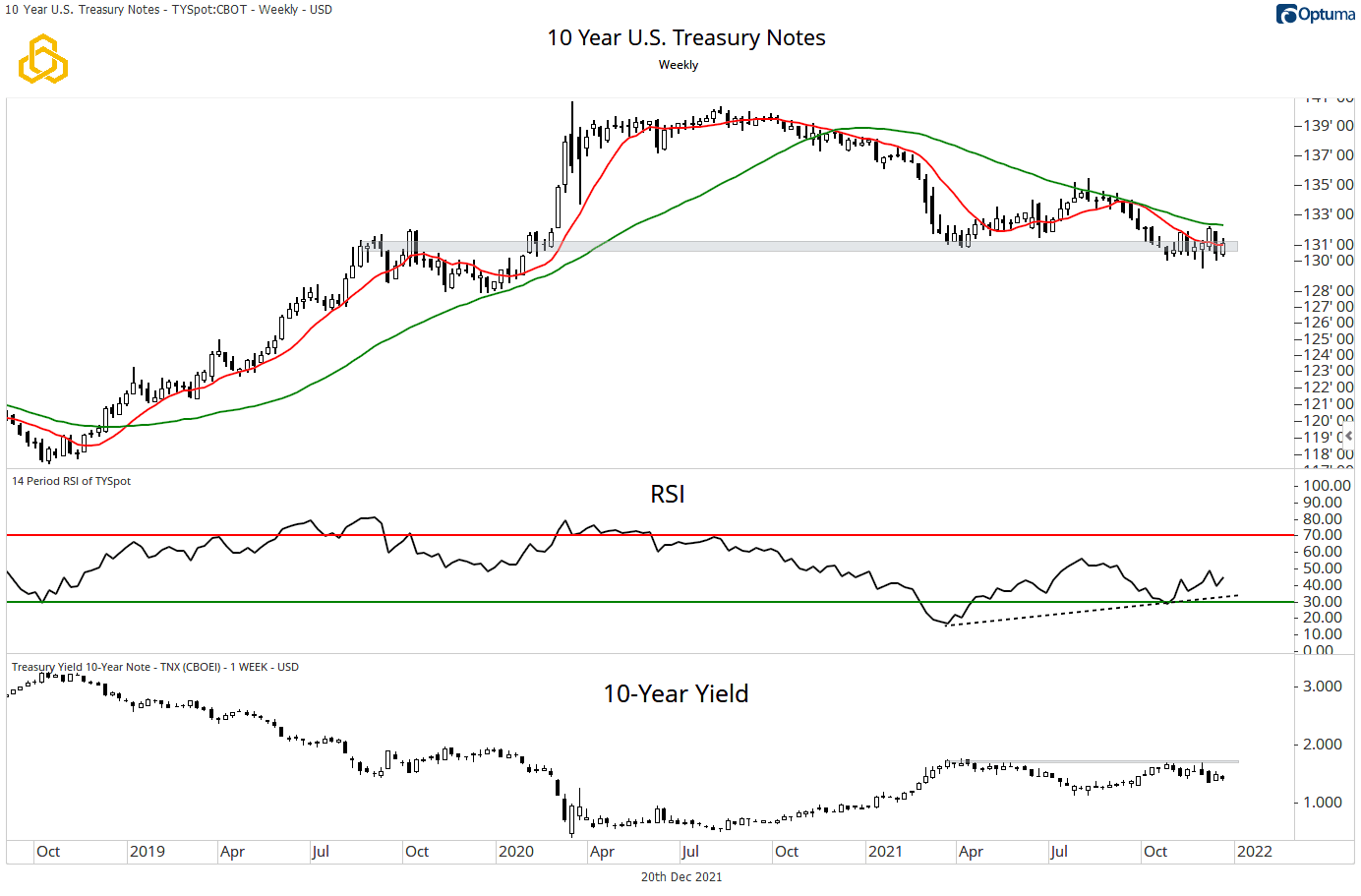
Across the curve, the picture was mixed last week and exhibited a reversal of recent behavior. Last week, the front-end of the curve moved lower while the back end moved higher, undoing some of the flattening activity that we have been highlighting for the past few weeks. The 20-Year/30-Year spread remains inverted, however.
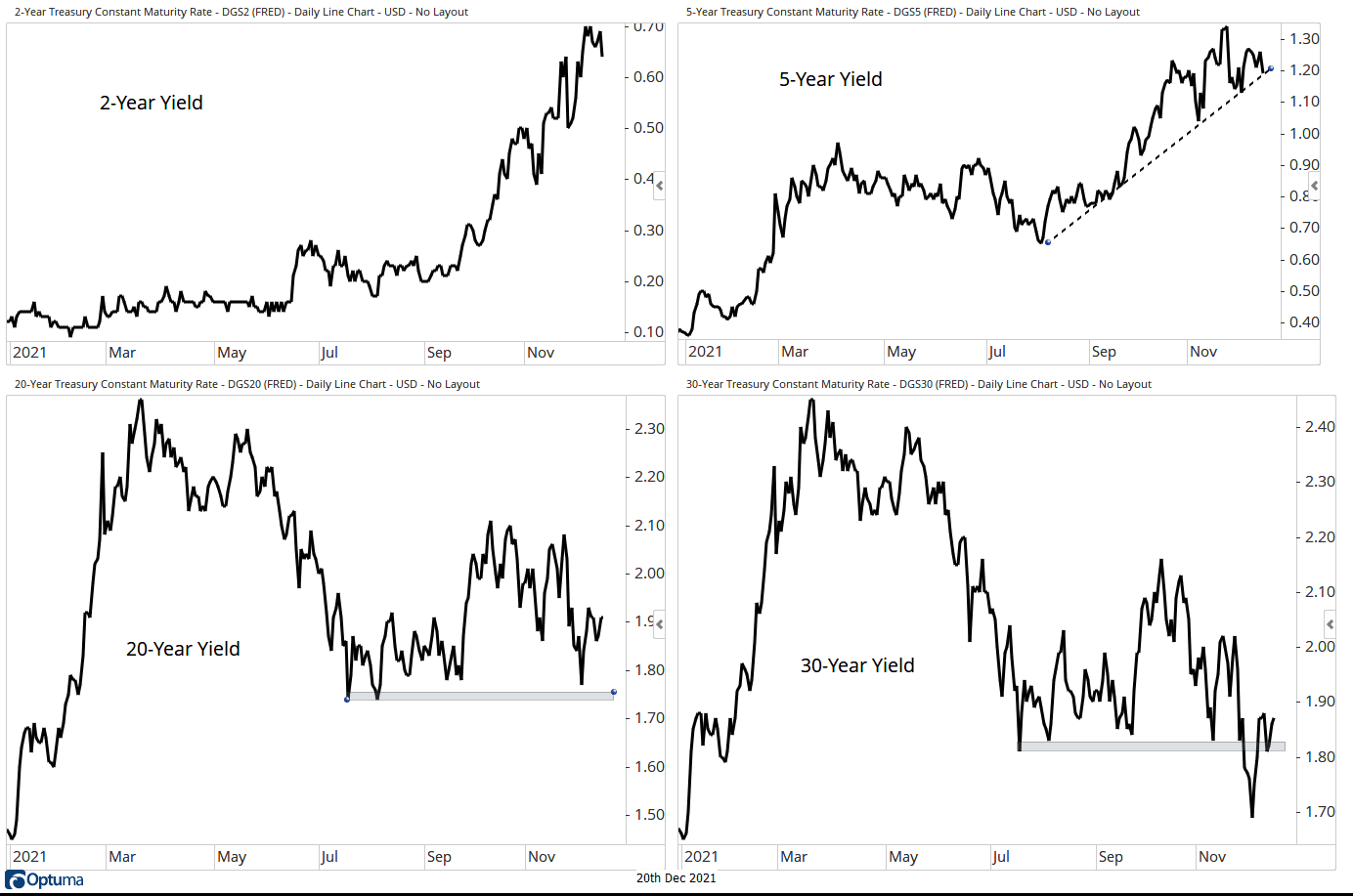
Global Equities
The Global Dow held up better than its counterparts in the U.S. last week, finding support at the rising 40-week moving average. The index does remain below the 10-week moving average for now, keeping the group in the consolidation that has marked trading since May. The 14-week RSI confirms the consolidation, trading in the middle of the range. The relative trend remains bearish, but there are early signs of a potential turn (stress early and potential), but we want to see a break of resistance before becoming excited about a “Rest of the World over the U.S.” theme.
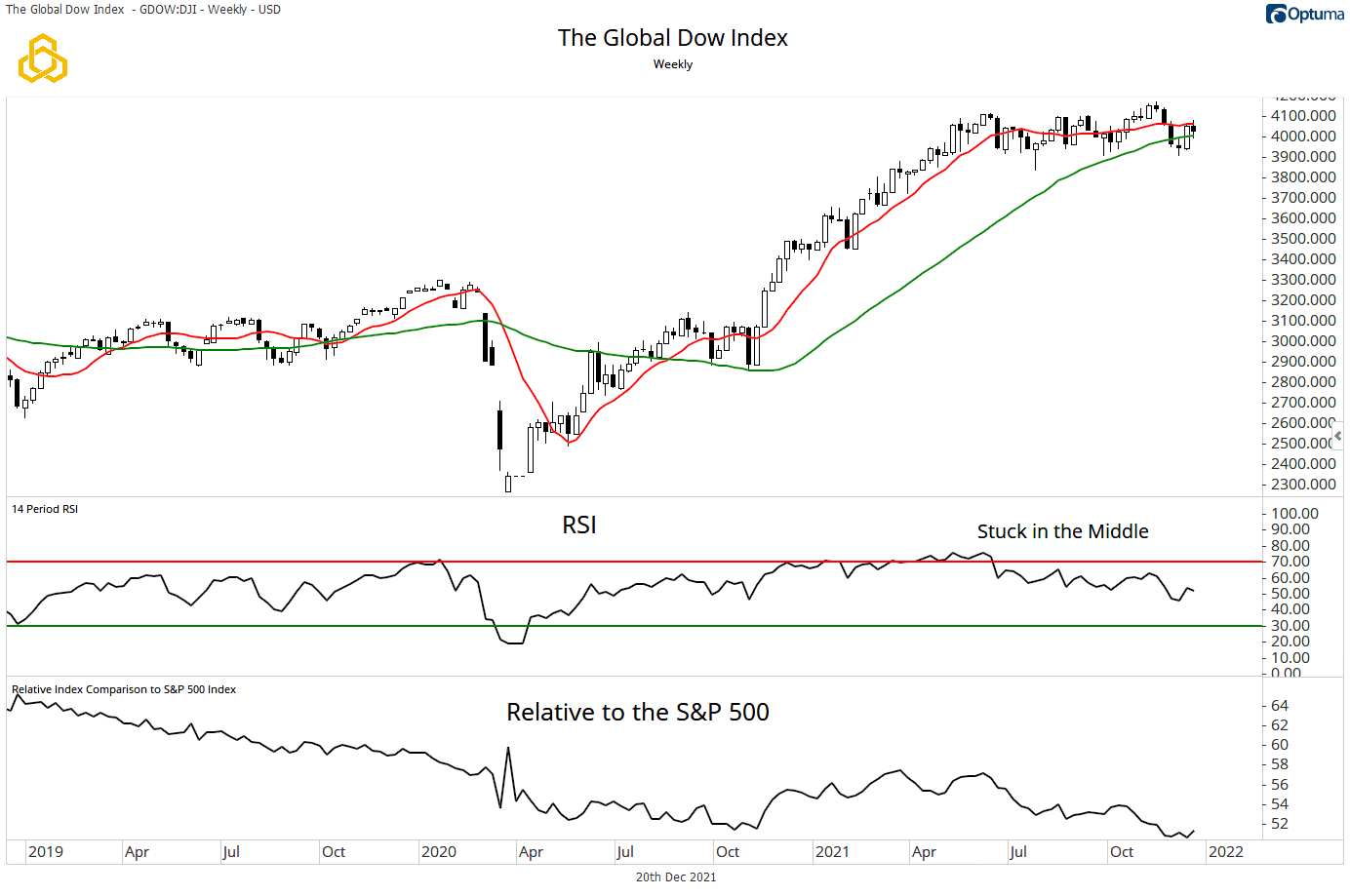
Commodities
For a third consecutive week, the Bloomberg Commodity Index found support at the rising 40-week moving average. Continuing to hold this level is important for the long-term trend, especially with the intermediate-term trend remaining under pressure; the index is below the declining 10-week moving average. So far, the 14-week RSI remains in a bullish regime, trading above the 40-level. Relative to the S&P 500, Commodities are holding their lows, trading in a consolidation. However, we want to see the ratio break resistance before making a case for outperformance.
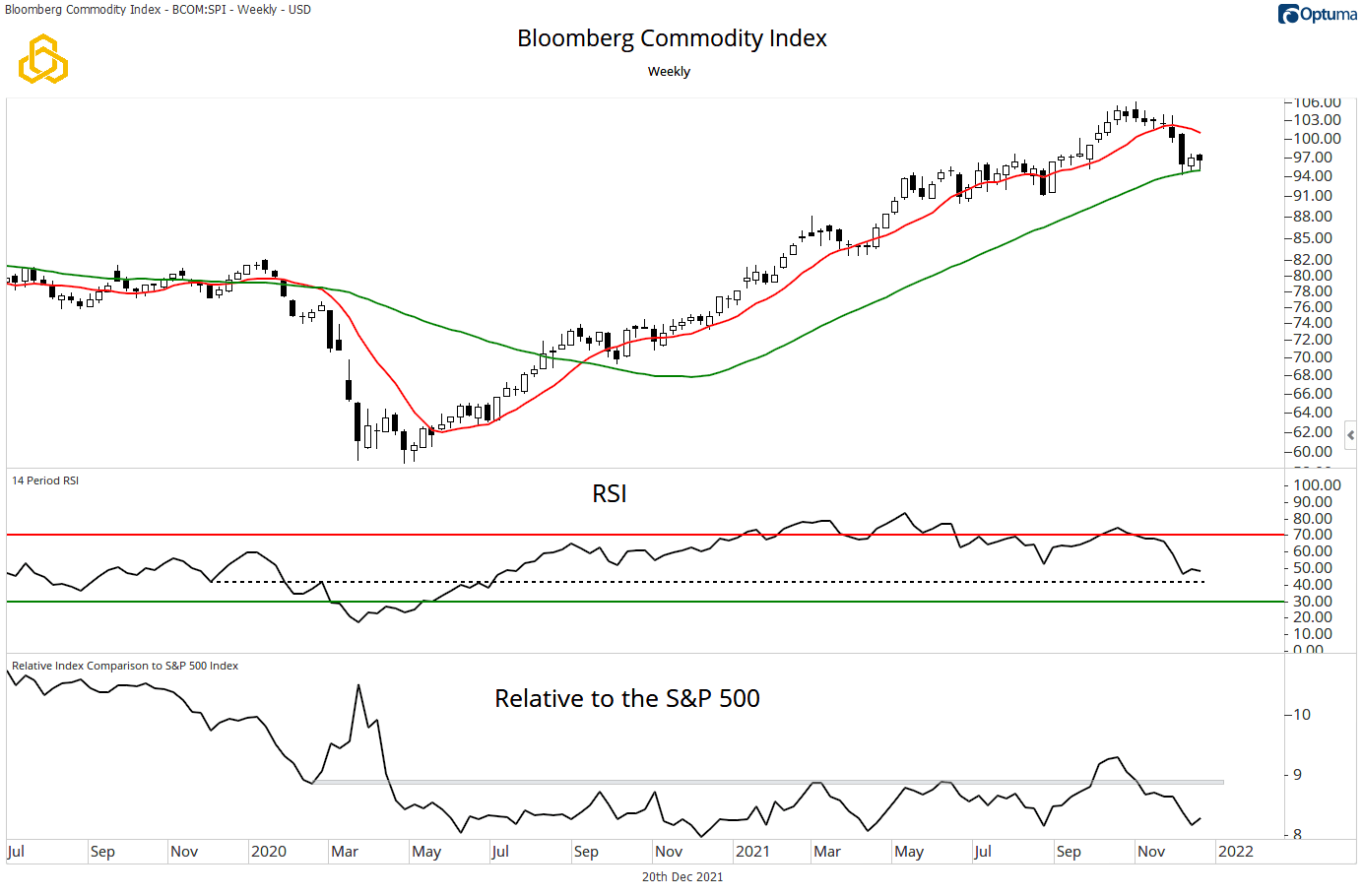
Within the commodity complex, the main trends remain the same:
- Precious Metals – Haven buying leads to a rebound on the week; still a lot of work to do.
- Industrial Metals – Chopping under the rising trend line, below 460, the bears take the ball.
- Agriculture – Consolidating, but the uptrend is in place, and the May highs are still in play.
- Energy – Bearish below the 250 level.
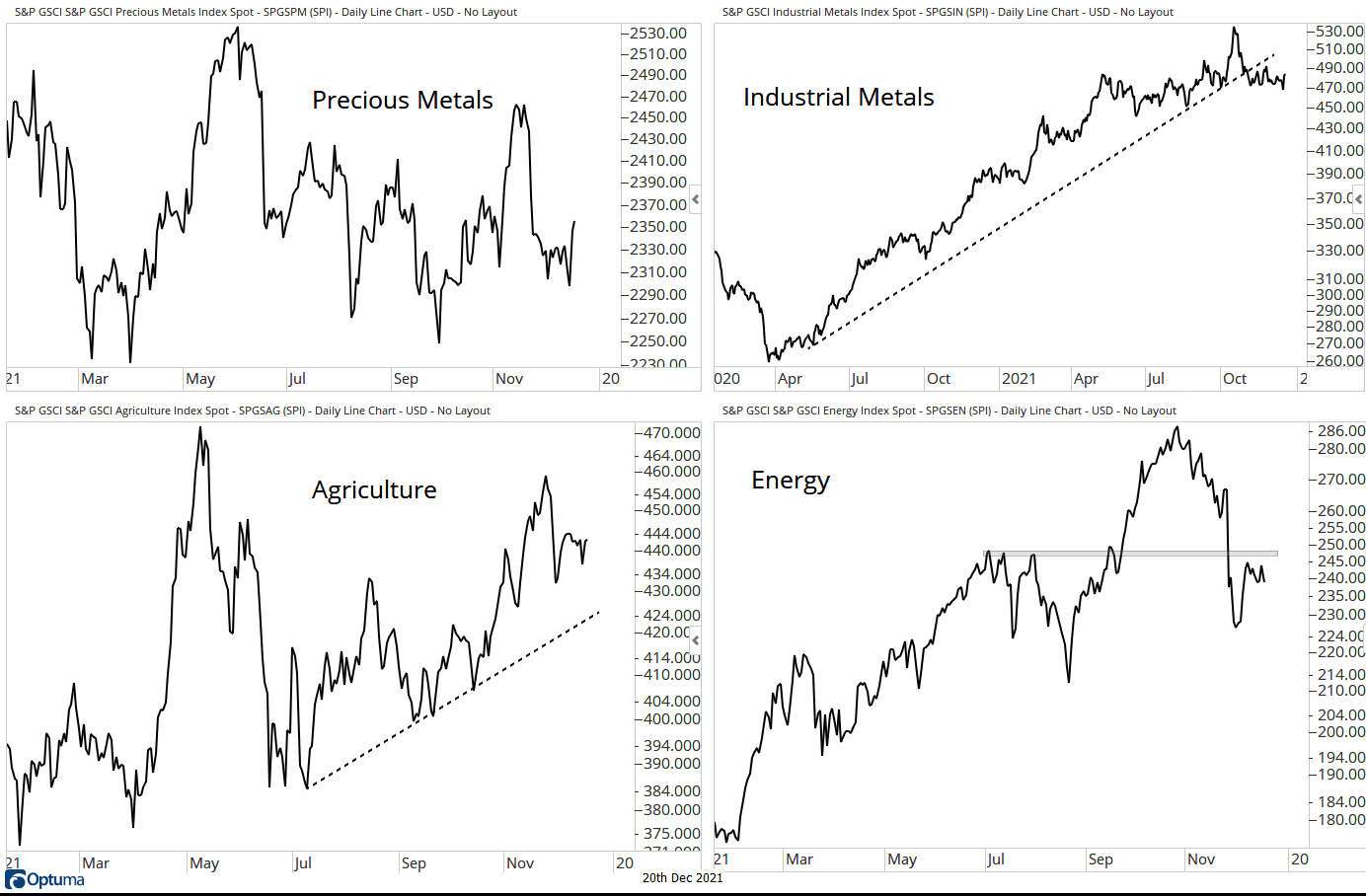
The Dollar
The U.S. Dollar remains above the 94.50 breakout level and the rising 10-week moving average to keep the trend bullish. The greenback likely benefitted from haven buying as risk assets came under pressure last week. The 14-week RSI is in an overbought condition, confirming the bullish price trend.
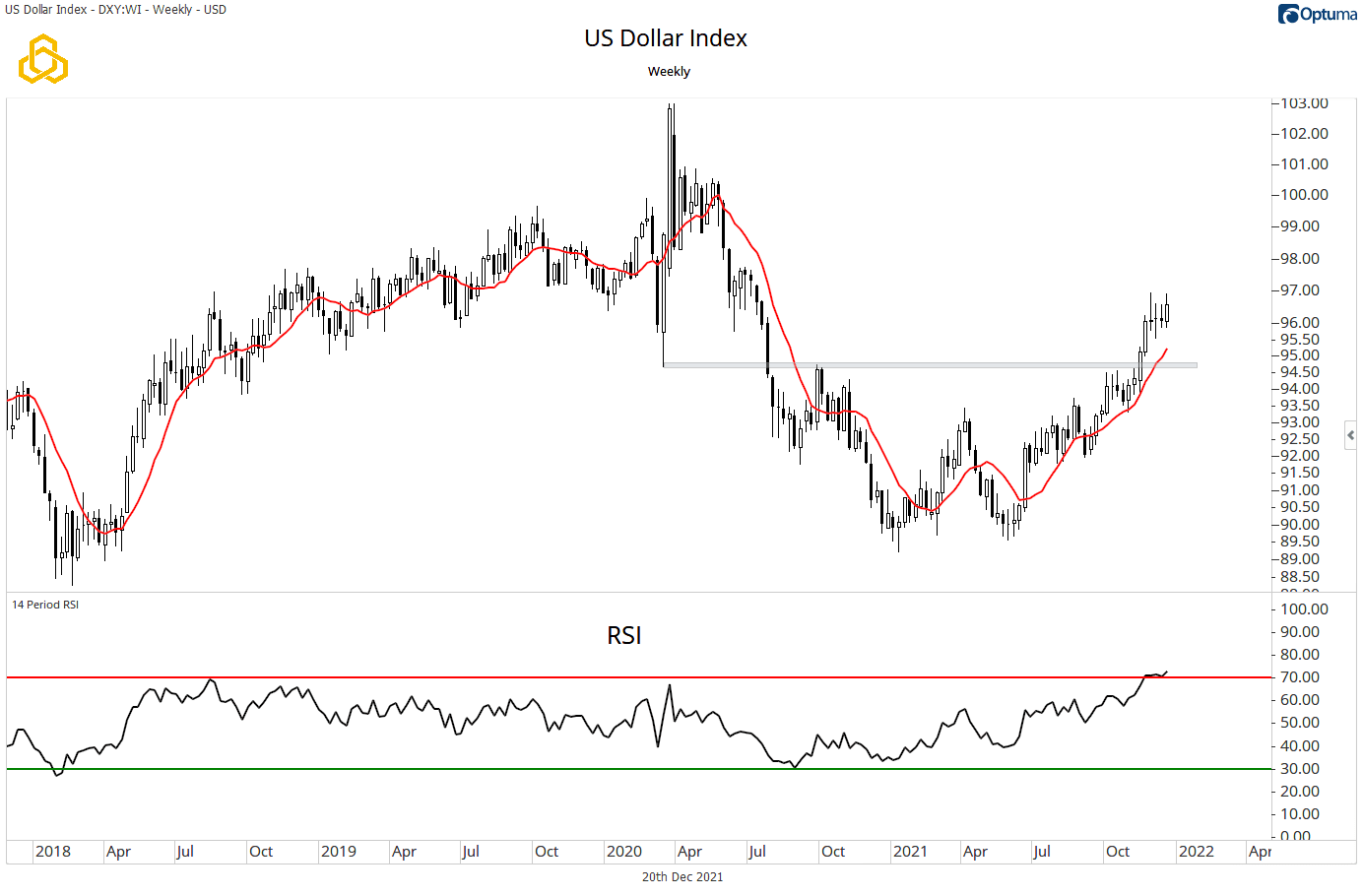
Take-Aways:
Short-term trading remains volatile, with a tilt toward “risk-off” across the U.S. equity landscape; as we discussed last week, timeframes matter. While the short-term is suspect, the long-term trends remain largely in place. From a leadership perspective, Small Caps continue to be a group to avoid, and we are beginning to have concerns about the NASDAQ Composite. Commodities are doing all they can to keep their uptrend in place despite a stronger dollar. Into the end of the year, rates will likely be a key driver of asset performance. The consensus view is for them to move higher, but that is not what is playing out now. More importantly, the flattening of the curve does not seem to be getting a lot of attention, which we feel is a mistake, especially if the message is one of slowing global growth.
Disclosure: This information is prepared for general information only and should not be considered as individual investment advice nor as a solicitation to buy or offer to sell any securities. This material does not constitute any representation as to the suitability or appropriateness of any investment advisory program or security. Please visit our FULL DISCLOSURE page.
